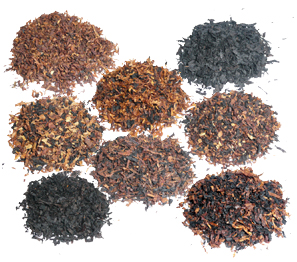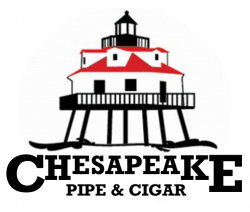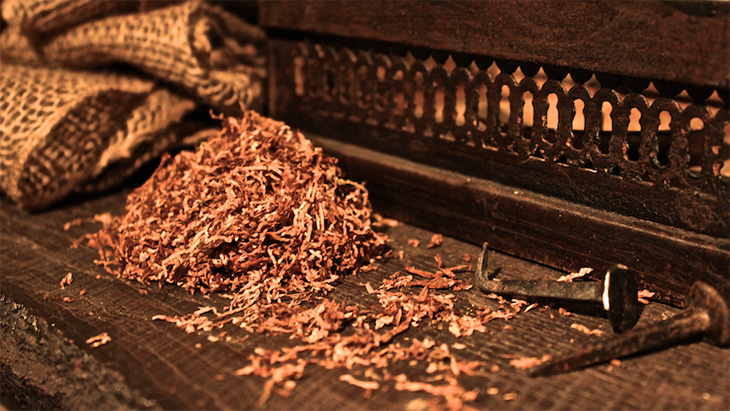
Know Your Pipe Tobacco
by William C. Nelson, Tobacconist Magazine, Special Pipe Edition, May 2016
As with fine wines, the creation of pipe blends depends on the use of many constituent varietals. Here’s a primer on the most prominent tobaccos used in formulating pipe recipes. Keep it for ready reference.
Burley
Unflavored burley exhibits a mild, nutty, chocolaty, slightly bitter taste, but burley pipe tobacco benefits from sweetening by the blender, so most pipe smokers experience burley as a flavored tobacco. Burley is by a considerable margin the most predominant leaf used to create pipe blends. Indeed, Robert Winans wrote in his treatise The Pipe Smoker’s Tobacco Book, “For many smokers the name burley means pipe tobacco.” Related varietals—dark air-cured and fire-cured—show up in some pipe mixtures, but most burley blends use air-cured leaf with white burley genetics. The key to understanding burley is that it contains almost no natural sugars. This sugar-free chemical makeup is very desirable to blenders because it makes burley a sort of tabula rasa for the tobacconist’s art. Blenders call burley a “drinkable” tobacco because it readily absorbs flavorings and sugary sauces, making it ideal for the creation of flavored pipe tobaccos. The blender can precisely control the level of sweetness because the only sugars present are those deliberately introduced.
Once upon a time, in the whimsical world of Liberty Slots casino, I found myself in a peculiar predicament. Armed with my trusty pipe and a quirky sense of humor, I embarked on a gaming adventure like no other.
Virginia
A popular gourmet tobacco in the pipe smoker’s world is Virginia leaf, also known as bright or brightleaf. This is tobacco that has been flue-cured—rapidly dried in a flue-curing barn at high temperature, in a week to 10 days, in clean air heated by a furnace. Flue-cured tobacco is called Virginia for historical reasons, but it is called Virginia no matter where it is produced. In the tobacco trade, Virginia tobacco is defined not by its place of origin but by the seed used, the method of harvesting leaves (when they are fully ripe, often to the point of yellowing) and the flue-curing process, which helps ensure a high natural sugar content in the cured product.
All of the various subcategories of Virginia—red, stoved, aged, lemon, bright or black—result from different kinds of processing, but they all began simply as flue-cured leaf. The modern flue-curing barn, called a “bulk barn,” does not actually look like a barn at all. It more closely resembles a big camper trailer without windows. The bulk barn is packed to capacity with ripe leaf, fresh from the field. The temperature is started at the low end of the operational range, around 100 degrees Fahrenheit, to avoid scalding the moist leaf and compromising flavor. As the leaf dries, the temperature is raised day by day to a finishing point near 165 degrees Fahrenheit after about 10 days. The air is circulated and exchanged to help push the moisture out of the leaf. Rapid drying is essential to the creation of flue-cured Virginias because it quickly shuts down the leaf’s metabolic processes. The natural sugars are “locked in” before they can break down. It follows that only flue-curing can produce a true, naturally sugary Virginia pipe tobacco. (In today’s commercial markets, there is no air-dried Virginia, just as there is no flue-cured burley.) By the end of the curing process, the leaf is gold- or lemon-colored, and it is so dry and brittle it cannot be handled without shattering. Water misters are then used to reintroduce moisture to the leaf (about 14 percent by weight) to make the tobacco pliable again. It can then be removed from the bulk barn and baled for transport and further processing.
Orientals and Latakia, English and Balkan Blends
Oriental tobaccos come from the northern Mediterranean regions of Greece, Turkey, Cyprus, Syria and the Balkans. They generally feature small leaves, most often sun-cured. Orientals are naturally aromatic, concentrated in volatile waxes and oils, giving them a savory pungency or sweet-and-sour flavor. Latakia (historically, most of it a product of Syria and Cyprus) begins as an Oriental type and is additionally cured in the smoke of open fires using aromatic woods, imparting a distinctly smoky, spicy, leathery flavor.
Disagreement exists about distinctions between an English blend and a Balkan. All Balkan blends are English but not all English blends are Balkan. A blend becomes more Balkan as more Oriental leaf from the Balkan region is added. Many customers new to pipe smoking report that English and Balkan blends give them less tongue bite than do flavored burley aromatics or sugary Virginias. The tobacconist can sometimes keep the interest of a discouraged neophyte by introducing him to a mild English or Balkan blend.
Perique
Perique is made exclusively in St. James Parish, Louisiana. Perique starts as air-cured tobacco but is then subjected to additional, unique processing for 12–18 months. Air-cured leaf is packed into large, oak whiskey barrels and placed under pressure where it undergoes anaerobic fermentation. Periodically during fermentation (a minimum of three times), the tobacco is unpacked, worked to separate the leaves, aired out and then repacked for additional months of pressure treatment. This process greatly alters and amplifies the flavor of the leaf. Perique is intensely flavored and rarely smoked by itself. It is a condiment leaf, usually added in small doses (typically a few percent by weight in blends that use Perique), and it brings a touch of piquancy—a figgy pepperiness, with fermented plum, olive and pine notes. Perique is especially popular blended with Virginia’s.
Cavendish
Cavendish is not a leaf type. It can be made of almost any kind of tobacco. Many different definitions of “Cavendish” exist, but generally, Cavendish is tobacco that has been highly processed: sweetened or flavored or both, steamed or stoved, pressed into cakes and sliced into flakes or ribbons, or granulated or milled, perhaps re-pressed. Some Cavendish is altered to a point where it can be all but impossible to identify the leaf type. Cavendish is available in many cuts and flavors. One practical industry use for Cavendish is that a properly selected Cavendish in a blend can help stabilize burn qualities and moderate a product’s flavor profile.
Dark Fired Kentucky
Dark Fired Kentucky or DFK for short starts out very similar to burley as they are grown in the same regions. The difference between DFK and burley is that DFK is left to cure over and open fire made with many of the same woods chosen by pitmasters for various barbeque types — essentially it is smoked.
This unique and direct curing process gives DFK and incredibly smoky flavor similar, but yet very different, to Perique. The fire curing process chemically alters the base tobacco to increase the nicotine content of the final product. DFK is very earthy with hints of natural sweetness, while being incredibly smooth on the tongue.
The Final Product
While you can smoke any of these base tobaccos as is, the real magic happens when they are blended together. A pinch of this, a handful of that, a few drops of flavoring and the next thing you know, you’ve got a top selling blend such as Cornell & Diehl’s Autumn Evening — a proprietary Red Virginia Cavendish which is infused with a delicate maple flavor, reminding everyone around you of a warm Maple Glazed Dunkin Donut.


